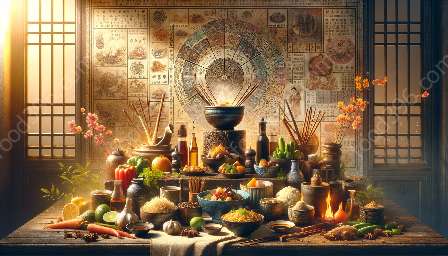Asian fusion cuisine brings together the diverse flavors, ingredients, and cooking techniques from different parts of Asia and the Western world. This culinary movement represents a fascinating blend of traditions, reflecting historical interactions, migration, and global trade.
Origins: The fusion of Asian and Western cuisines has deep historical roots, dating back to the time of the Silk Road. The ancient trade routes facilitated the exchange of goods, including spices, fruits, vegetables, and cooking methods, between the East and the West. This cross-cultural interaction laid the foundation for the fusion of culinary traditions.
Impact of Historical Events: The colonial expansion of European powers in Asia during the 16th and 17th centuries also played a significant role in shaping the fusion of Asian and Western cuisines. The influx of new ingredients, such as chili peppers, tomatoes, and potatoes, into Asia led to the adaptation of these elements into traditional Asian dishes, creating new and exciting flavor profiles.
Integration of Techniques: The fusion of Asian and Western cuisines is not merely about incorporating ingredients from one cuisine into the other. It also involves the integration of cooking techniques and cultural practices. For example, the introduction of stir-frying and steaming in Western kitchens, influenced by Asian culinary methods, brought about a revolution in the way Western foods were prepared and enjoyed.
Adaptation and Creativity: The fusion of Asian and Western cuisines has provided chefs and home cooks with a platform to experiment, innovate, and create new gastronomic experiences. This culinary fusion encourages cross-cultural understanding and appreciation, leading to the development of unique dishes that honor both traditions while embracing innovation.
Modern Influence: In recent decades, the fusion of Asian and Western cuisines has gained global popularity, with restaurants and food establishments incorporating diverse elements from both culinary traditions. This trend has resulted in the emergence of exciting flavor combinations, fusion dishes, and multicultural culinary experiences, contributing to the enrichment of the global food landscape.
Key Factors Driving Fusion: The fusion of Asian and Western cuisines has been driven by factors such as globalization, increased travel and exposure to diverse culinary experiences, and the growing appreciation for authenticity and creativity in cooking. These factors continue to shape and redefine the evolving landscape of fusion cuisine.
Conclusion: The fusion of Asian and Western cuisines is a dynamic and ever-evolving phenomenon that reflects the interconnectedness of cultures and the shared love for great food. As we continue to embrace culinary diversity and celebrate the fusion of flavors and traditions, we contribute to the ongoing story of this remarkable culinary journey.

